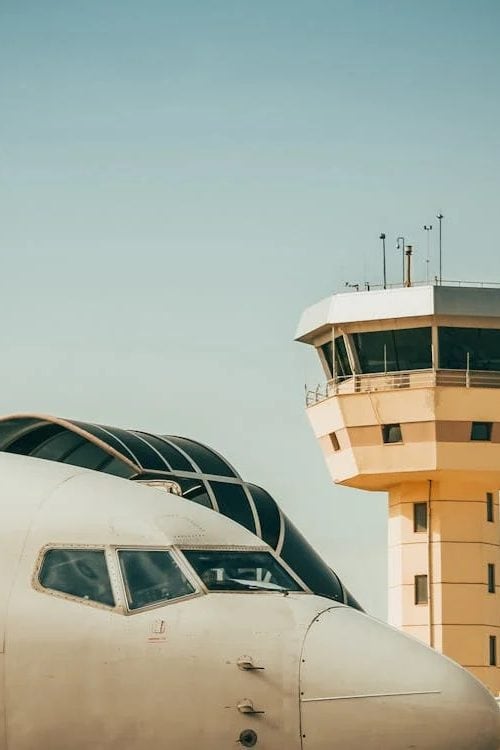China is quickly reversing its zero-COVID policies after close to three years of border closures and travel restrictions. With this, flight activity is picking up quickly and its aviation industry is once again open to the world. We take a look at some of the main changes this will bring.
Aviation Guides
- What is Sustainable Aviation Fuel?
- A Short Guide to FBO’s – the Dos and Dont’s
- Current Risks to Aviation
- How Air Cargo is Revolutionising the Global Economy
- The Cost To Operate A Private Jet
- Infrastructure For Sustainable Aviation Fuel
- Why There Is A Need To Improve Aviation Industry
- Emergency Flight Charter
- Diplomatic Flight Operations
Increased air travel
As we entered 2023, global air travel was quickly heading back to pre-COVID levels. IATA forecasts that by the end of year, travel volume will reach 85.5% of pre-pandemic levels globally, but there are some forecasts of more rapid return.
Several areas have been holding this recovery back, however. Chinese aviation, and in particular international flights to and from China, are amongst these. For much of the pandemic, strict borders closures meant there were only minimal international flights. Local lockdowns and restrictions left domestic traffic restricted as well.
This is now changing. China began a rapid relaxation of its zero-COVID policies at the end of 2022, and with this there has been a sharp increase in air traffic. In just the two weeks from November 29th to December 13th, domestic flight activity in China increased from 22% to 65% of pre-pandemic levels (according to reporting by Bloomberg). For the popular lunar new year in February, levels of 80% were expected.
In the short term there could be variation in this – as the new year rush passes, and there are possibly further concerns of increasing cases – but the longer-term government policy and public desire to travel seem clear. The Chinese CAA has set the goal of increasing flight volume to 88% of pre-pandemic levels by the end of January 2023.
IATA has not updated its forecasts, but others have commented on the potential effect globally. To quote just one – Andy Cronin, Avolon chief executive, believes China’s increases will push global traffic to return to full pre-pandemic levels by June 2023.
More use of Russian airspace
International flights to and from China will have a big effect on neighbouring airspace. The ongoing conflict in Eastern Europe means that most airlines are completely avoiding Ukrainian and Russian airspace. This is creating complex and longer routings, in particular with Europe to Asia routes.
The drop in use of this has been very significant. According to ICAO, Russia generated more than any other country from its airspace per-pandemic – around $1.7 billion annually in overflight permits.
China’s rapid resumption will put further pressure on neighbouring airspace. There is already concern over certain bottlenecks in new routings, and this will only worsen as flight volumes increase.
Such diversions are already expensive and time-consuming and with increasing traffic we are likely to see more return to Russian airspace. Chinese airlines will certainly do this (there has been discussion from Western countries about banning airlines that do so, but this has mixed reaction). Some other airlines, including Emirates and a number of other Middle Eastern and African airlines are already using Russian airspace. This is likely to increase with the higher Chinese volumes.
A boost for Chinese aircraft manufacturing
The other aspect to aviation in China is the country’s own development and manufacturing of aircraft. Chinese state-backed manufacturing poses a real threat to the Boeing and Airbus duopoly in commercial airliners. This has moved forward during COVID, but border closures and restrictions of around three years will have affected this. Things were looking strong by the end of 2022 with several major developments.
Its first modern commercial aircraft, the 90-seat regional jet ARJ21, first flew in 2008. Until late 2022, it only operated with Chinese airlines, but COMAC has now sealed its first international airline customer with Transnusa in Indonesia. The narrowbody C919 (with capacity of 156 to 168 passengers) takes this further and more closely threatens Boeing and Airbus. It received its certification and entered service in 2022. There has been significant interest reported, but no confirmed international customers. Open borders and increased regional flight activity will restart this.
Development of widebody aircraft remains unclear. COMAC has been working in partnership with Russia’s United Aircraft Corporation (UAC) on a new CR929 aircraft. This was originally proposed to enter service in 2027, but with the aircraft still in the design phase this seems unlikely. It is not clear how the pandemic or the current situation in Russia has affected the development, but we will likely find out more during the year.
Final Thoughts
China has been largely closed for the past three years. A rapid end and reversal to its zero-COVID strategy is seeing the country, and its aviation industry, re-open quickly. The situation could change quickly again, but for now travel volumes and international cooperation are on the increase.
Sources:
Bloomberg (China flight data): China Air Travel Demand Surges as Covid Zero Rules Dismantled – Bloomberg
Reuters (CAA plans): https://www.reuters.com/business/aerospace-defense/china-issues-plan-increase-flights-boost-air-passenger-volumes-caixin-2022-12-16/
Avalon, Andy Cronin quote, and ICAO stats: https://www.telegraph.co.uk/business/2023/01/16/air-travel-return-pre-pandemic-levels-june-where-will-planes/
CONTACT OUR TEAM TODAY
If you are struggling with flight support or any of its complexities, feel free to contact our team today for more information.




